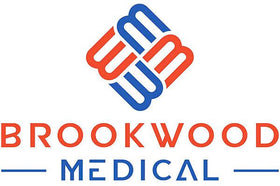The Impact of Mask-Wearing on Social Interactions

Frequently Asked Questions
1. Why have protective face masks become a significant part of everyday life?
2. How does mask-wearing affect communication?
3. What are the psychological effects of wearing masks?
4. How can communities adapt to new social norms regarding mask-wearing?
5. What might the future of social interaction look like post-pandemic?
In recent years, the world has experienced a seismic shift in everyday practices, particularly when it comes to social interactions. One of the most visible changes has been the widespread use of protective face masks. As society adapts to these new norms, it’s crucial to understand how mask-wearing influences communication, relationships, and our overall perception of social interactions. In this article, we will explore the various dimensions of this transformation and its implications for the future.
The Rise of Protective Face Masks
Protective face masks have become an essential element of everyday life. Initially adopted for health and safety reasons amid global health crises, these masks have since ingrained themselves into our daily routines. The transition to mask-wearing has introduced a new layer to our communication methods. It isn't just about protection anymore; it's about how we navigate the social spaces we once took for granted.
Altered Communication Styles
Communication often extends beyond words; non-verbal cues play a significant role in how we relate to one another. With the introduction of the protective face mask, many of these non-verbal signals have been obscured. This section breaks down how mask-wearing changes our communication dynamics.
Facial Expressions and Emotional Connection
One of the most immediate impacts of wearing protective face masks is the concealment of facial expressions. Research indicates that around 55% of human communication is non-verbal, and for many, the face serves as a crucial canvas for expressing emotions. Masks can limit our ability to convey warmth, happiness, or frustration, which may lead to misunderstandings.
- Reduced Recognition: The mask makes it harder to recognize familiar faces. This results in feelings of isolation, especially in social gatherings.
- Emotional Detachment: Without the ability to read facial expressions, conversations may feel less engaging and more transactional.
- New Forms of Expression: People have started using their eyes and gestures more effectively to communicate emotions, signaling an adaptation to the new norm.
Changes in Verbal Communication
The presence of a protective face mask also impacts how we communicate verbally. Here are some effects to consider:
- Altered Voice Clarity: Masks can muffle speech, making it harder for both parties to understand one another. This can lead to frustration and an increase in miscommunication.
- Volume Adjustments: People may find themselves speaking louder in an effort to be heard, which can seem socially awkward in quiet settings.
- Increased Reliance on Digital Communication: Those who find it challenging to communicate face-to-face may turn to text or video platforms, further distancing themselves from in-person interactions.
Impact on Social Bonds
Human beings are inherently social creatures, and the connections we build are pivotal to our well-being. Mask-wearing brings about changes to the way we establish and maintain these relationships.
Strain on Pre-existing Relationships
The emotional distance that masks introduce can add strain to relationships that were once healthy. Friends and family members might feel less connected due to their inability to express emotions fully. Here’s how masks affect those relationships:
- Fear of Vulnerability: With masks obscuring faces, people may feel less inclined to share their emotions or show vulnerability, leading to emotional barriers.
- Physical Interaction Limitations: The recommended guidelines surrounding social distancing often accompany mask mandates, limiting physical touch, such as hugs or handshakes, which are crucial for strengthening bonds.
Building New Connections
Despite the challenges, there are also opportunities for building new relationships amidst mask-wearing. Here are some positive perspectives:
- Creative Introductions: Many have become more inventive in how they introduce themselves to new people, utilizing humor or unique approaches to break the ice.
- Shared Experiences: The shared experience of navigating a global pandemic has provided a unique context for bonding, creating camaraderie among those who are facing similar challenges.
- Focus on Other Attributes: With faces partially hidden, people may begin to focus more on qualities such as voice, character, and gestures, which can foster deeper relationships.
The Psychological Effects of Mask-Wearing
The act of wearing protective face masks can evoke various psychological responses, influencing how individuals perceive themselves and others.
Increased Anxiety Levels
For some, wearing a mask can heighten feelings of anxiety. Here’s how:
- Social Anxiety: People who already experience social anxiety may find it challenging to engage in conversations, fearing judgment or misinterpretation.
- Health-Related Concerns: Wearing a mask can trigger anxiety for individuals concerned about health risks, leading to avoidance of social interactions altogether.
Boosting Confidence in Others
Conversely, many individuals have reported feeling safer and more confident while wearing a mask, as it shields them from exposure while also signaling care for their health and the health of others.
- Empowerment through Protection: The act of wearing a protective face mask can instill a sense of power by taking action to protect oneself and the community.
- Boosting Empathy: Seeing others in masks and understanding the shared experience of protection can foster a sense of collective responsibility and empathy.
Adapting to a New Social Norm
As the world continues to navigate the implications of mask-wearing, it’s important for individuals and communities to adapt to new social norms. Understanding the impact of these changes can help us find solutions that enhance social interactions in a masked world.
Creating Inclusive Spaces
Communities should strive to create inclusive spaces that accommodate varying comfort levels around mask-wearing. Here are some ways to foster inclusivity:
- Clear Communication: Establishing guidelines that respect personal preferences regarding mask-wearing can help create a comfortable environment.
- Mask Mandates for Certain Spaces: Some areas may require masks while others are more relaxed, allowing individuals to choose settings based on their comfort levels.
Utilizing Technology
Incorporating digital tools can significantly enhance social interactions during these times of mask-wearing:
- Scheduled Video Calls: Maintaining connections through virtual platforms ensures that social bonds remain strong despite physical distance.
- Social Media Engagement: Reimagining how we interact on social media can foster feelings of belonging and connection, encouraging people to engage with one another.
The Future of Social Interaction
As we look to the future, it is essential to consider the long-lasting effects of protective face masks on our social interactions. While the challenges are significant, the adaptation serves as a testament to human resilience and ingenuity.
Embracing Change
Society tends to evolve more rapidly during times of crisis. Embracing the changes brought about by mask-wearing may lead to new, innovative ways of connecting. The pandemic has accelerated many trends: a greater focus on mental health, the rise of digital communication, and an enhanced appreciation for personal connections.
Redefining Social Interactions
Future social interactions may become more thoughtful and intentional as individuals adapt to a world where protective face masks are prevalent. As we redefine our interactions, some key takeaways could include:
- Greater appreciation of shared experiences:
- More mindful communication practices:
- A stronger emphasis on emotional connections over superficial engagements:
Finding Silver Linings on the Masked Journey
While the impact of protective face masks on social interactions presents multifaceted challenges, it also opens up avenues for personal growth and deeper connections. The journey may be complex, but by embracing the changes, we can cultivate a future where social interactions are rich, meaningful, and resilient. By understanding the dynamics at play, we not only adapt to the present but also prepare for a future where human connection remains at the heart of our society—masked or unmasked.
Explore the world of another Shopify or Wix store owner. Visit their captivating online store. Keep in mind that this is a promotional link, and we are not responsible for the content of the linked store.






